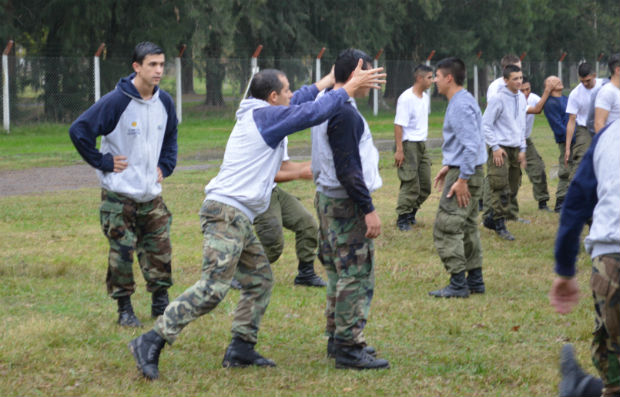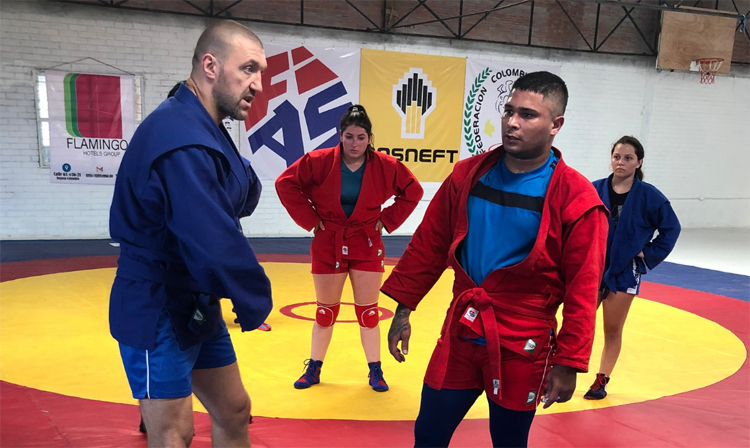Unearth the potent world of Sambo, a revolutionary martial art form that is dramatically changing the face of military and public security training worldwide. This post seeks to delve into the profound impact and significance of this Russian combat technique on the global sphere. We promise an insightful journey that unfolds the intricacies of Sambo, its roots, and its present-day relevance in shaping formidable military and security personnel.
Sambo, an acronym for ‘SAMozashchita Bez Oruzhiya,’ which translates to ‘self-defense without weapons,’ is much more than a mere combat sport. It’s a dynamic blend of judo and wrestling, designed to equip one with effective self-defense tactics. The transformation it’s bringing to military and public security training is noteworthy, and this post aims to shed light on that very revolution.
So, brace yourself as we unravel the fascinating world of Sambo. You will get to explore its historical background, understand its techniques, and witness its application in military and law enforcement training. Moreover, we will introduce you to the benefits of Sambo training and the reason behind its growing popularity in the security sector. Join us on this exciting journey into the world of Sambo, a martial art that is not just a sport but a way of life for many. 🥋🌎💪🏼

The Revolutionary Martial Art: Sambo
As a hybrid martial art, Sambo incorporates elements from judo, jujitsu, and wrestling, resulting in a comprehensive and potent system for self-defense and combat. While initially developed by the Soviet Red Army in the early 1920s, this versatile and practical martial art has seen a surge in popularity in recent years, especially in the realm of military and public security training.
Why Sambo Stands Out
One of the reasons Sambo has revolutionized military and public security training is its adaptability and applicability to real-world scenarios. Unlike other martial arts that have strict rules and formalities, Sambo has a unique focus on practicality. This practicality manifests in various forms:
- Combat Sambo: This form of Sambo focuses on neutralizing threats quickly and effectively. This is the form most commonly adopted in military and law enforcement contexts due to its direct applicability to combat situations.
- Sport Sambo: This form focuses on competitive fighting and is often compared to judo. Its emphasis on throws and submissions make it an excellent training method for improving physical conditioning and coordination.
The Science Behind Sambo
At its core, Sambo is a highly technical martial art. It requires a deep understanding of biomechanics, the science of movement. This is what allows practitioners to execute throws, joint locks, and chokes with minimal effort, yet maximum effect.
- Improved efficiency: The ability to neutralize threats with minimal physical effort is a valuable asset in situations where energy conservation is crucial.
- Injury prevention: Understanding the mechanics of the human body and how to manipulate it effectively can help prevent injuries both to the practitioner and the person they are apprehending.
- Increased confidence: Being equipped with such knowledge can boost the confidence of law enforcement and military personnel, enabling them to perform their duties more effectively.
Technical Training
Training in Sambo involves a combination of physical conditioning, technique drills, and live sparring.
Physical conditioning in Sambo primarily focuses on improving flexibility, strength, and cardiovascular fitness. These physical attributes are crucial for executing Sambo’s dynamic throws and submissions.
Technique drills involve practicing specific moves repeatedly to develop muscle memory. This is an essential part of mastering the biomechanics behind Sambo’s techniques and making them second nature.
Live sparring, also known as randori, provides the opportunity to apply these techniques in a controlled, yet unpredictable environment, simulating real combat situations.

The Impact of Sambo on Military and Public Security Training
Sambo’s impact on military and public security training is profound. Many military units and law enforcement agencies around the world have incorporated Sambo into their training regimens.
The practical and scientific approach to combat that Sambo provides is particularly well-suited to these contexts. Sambo’s focus on real-world applicability and biomechanics not only prepares personnel for physical confrontations, but also promotes strategic thinking and decision-making under pressure.
Final Thoughts
In an era where security threats are increasingly diverse and complex, the need for adaptable, effective hand-to-hand combat training is more critical than ever. Sambo, with its practical approach and scientific basis, offers a powerful solution. As this Russian martial art continues to gain recognition and acceptance worldwide, it’s clear that Sambo will continue to revolutionize military and public security training for years to come.
Conclusion
In conclusion, Sambo’s rise in popularity within military and public security training circles is no coincidence. Its combination of adaptability, practicality, and science-based techniques, make it an incredibly effective and efficient system for hand-to-hand combat and self-defense. Its emphasis on real-world application and biomechanics allows for enhanced decision-making under pressure, injury prevention, and improved efficiency – vital attributes in high-stakes, energy-intensive scenarios. Moreover, the discipline and mental resilience fostered through Sambo training also translate into invaluable life skills for those serving in the military or law enforcement. As global security threats grow increasingly complex, the need for dynamic, adaptable combat training becomes paramount. And with Sambo’s proven track record in these critical sectors, its role in revolutionizing these fields of training is undeniable. Looking ahead, it’s evident that Sambo will continue to shape and influence the way military and public security personnel train, ensuring they are better equipped to handle the challenges they face.🌐🥋🛡️
